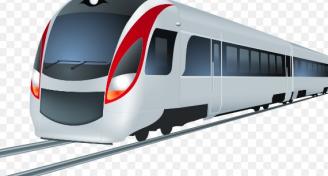Living Architecture / Green Cities
The purpose of Green Infrastructure is to provide a coherent methodology to enable a city to change its Infrastructure Planning and Implementation from today’s state into a better more sustainable condition for the future. This transitioning from Grey to Green Infrastructure will require a combined effort from Policy makers, Design & Construct implementers and the general public over time. The process of transitioning analyses old systems with a view to influencing the implementation of new ones over a relatively long timescale.
From population growth to rapid urbanisation, changing consumption patterns to deteriorating infrastructure, increasing energy prices to climate change: water systems in cities throughout the world are confronted by an intimidating future. The combination of Green Infrastructure and Integrated Urban Water Management (IUWM) can make a difference
Transitions are usually long term processes that occur due to the co-evolution of several societal, economic (marketdriven) and technological processes The possibilities of influencing long-term changes, who are the key players and identifying what is to be changed are all addressed. The manual also shows how to define appropriate starting points, how the change can be achieved and whether it is going in the right direction. These issues are not easily addressed. The ‘socio-technical systems’ or ‘complex systems’ that we want to transition are the urban water systems that provide our cities with water supply, sanitation and drainage services. Good quality, safe and clean water supplies, and attractive watercourses, which do not cause problems with flooding, are goals for any city of the future. To achieve this, the function and interaction of urban water cycles, water supply, drainage and river systems, and how they interact with society, must be understood. It is not the scope of this manual to go into the finer details of the urban water cycle or integrated urban water management since operational details of methods and tools are widely available.
The overall approach is termed Integrated Urban Water Management (IUWM), which addresses the whole urban water cycle and delivers all-round benefits for society, the environment and economies. Sustainable approaches may require a range of large or small changes and may need to incorporate new discoveries, environmentally sound technologies or next generation systems and techniques.
Transitioning stems from a growing urgency for things to be done differently. Conventional urban water management practices the world over are proving to be un-sustainable in the face of persistent global pressures such as climate change and increasing urbanisation.
From population growth to rapid urbanisation, changing consumption patterns to deteriorating infrastructure, increasing energy prices to climate change: water systems in cities throughout the world are confronted by an intimidating future. Integrated Urban Water Management (IUWM) can make a difference
The design and management of the urban water system based on an analysis of the entire system will lead to more sustainable solutions than separate design and management of elements of the system.’
Transitions are usually long term processes that occur due to the co-evolution of several societal, economic (marketdriven) and technological processes The possibilities of influencing long-term changes, who are the key players and identifying what is to be changed are all addressed. The ‘socio-technical systems’ or ‘complex systems’ that we want to transition are the urban water systems that provide our cities with water supply, sanitation and drainage services. Good quality, safe and clean water supplies, and attractive watercourses, which do not cause problems with flooding, are goals for any city of the future. To achieve this, the function and interaction of urban water cycles, water supply, drainage and river systems, and how they interact with society, must be understood. It is not the scope of this manual to go into the finer details of the urban water cycle or integrated urban water management since operational details of methods and tools are widely available.
The overall approach is termed Integrated Urban Water Management (IUWM), which addresses the whole urban water cycle and delivers all-round benefits for society, the environment and economies. Sustainable approaches may require a range of large or small changes and may need to incorporate new discoveries, environmentally sound technologies or next generation systems and techniques.
Transitioning stems from a growing urgency for things to be done differently. Conventional urban water management practices the world over are proving to be un-sustainable in the face of persistent global pressures such as climate change and increasing urbanisation.
The process of transitioning analyses old systems with a view to influencing the implementation of new ones over a relatively long timescale.
The design and management of the urban water system based on an analysis of the entire system will lead to more sustainable solutions than separate design and management of elements of the system.


